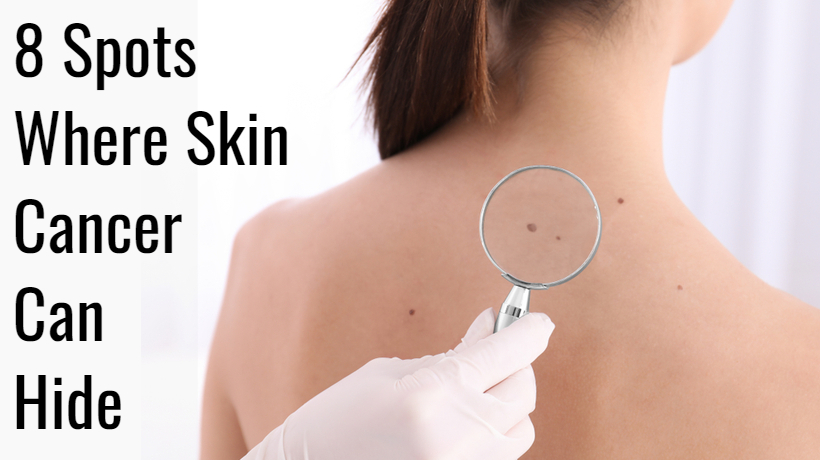With summer quickly approaching, it may be tempting to hit the beach and soak up some sunshine. But with getting that summer tan comes the added responsibility of monitoring the amount of sun exposure you receive. Tans can be fun, but it’s also important to be vigilant of your skin–specifically the spots most at risk for skin cancer.
The most vulnerable areas that receive the most sun exposure are your face, arms, legs, and your chest. Dr. Purvisha Patel, a Memphis dermatologist says that “skin cancers can essentially form anywhere we have skin”. Many factors can contribute to skin cancer-other than the sun. While sun exposure can affect certain areas of the body, genetics, family history, age, and your immune system can contribute to skin cancer, and can even develop in other areas you don’t typically expect.
Here are 8 areas skin cancer where can hide:
Scalp
Your hair cannot entirely prevent sun damage to your scalp. Dr. Patel notes that those with lighter colored, thinned hair are most susceptible to the damage of UV rays. Where you part your hair is an area of particular concern, as it is the most exposed to the sun. Hats, of course, are the best way to prevent skin damage to the scalp. A wide-brimmed hat in particular can additionally protect your face from the sun, as well. Spray sunscreen may also protect you, if you do not wish to wear a hat, as it can penetrate your hair and shield your scalp.
Eyelids
Sunglasses are always a big help during the summer and on sunny days, however, your eyelids can be exposed to sun damage almost daily. According to the British Journal of Opthamology, “up to 10% of skin cancers form on our lids”. When applying sunscreen, make sure to not miss your eyelids (with caution, of course), or even consider investing in an SPF based sunscreen that works for your skin.
Palms and soles
Your legs and arms are quite susceptible to sun damage at any time. Even though they do not typically see the sun, our palms and soles can show cancerous spots. Acral lentiginous melanoma is a rare, specific kind of skin cancer that form on your palms, soles, and nail beds—however, it is mostly common in people of color. Although there is no guaranteed way of preventing it, acral lentiginous melanoma is thought to be a result of past injury or genetics. Being aware of any random sprouts of dark spots or pain should be brought up with a doctor or dermatologist to ensure proper measures.
Between your toes
Often a generally overlooked area, skin cancers can form in between our toes. Because they are so overlooked, the cancers can be more aggressive, and can grow deeper and larger if we are not aware of them. Even if you are regularly applying sunscreen on your feet, Dr. Patel advises to make sure to make the effort to apply the sunscreen in between every toe to ensure they are as equally as protected as the rest of your feet.
Fingernails and toenails
Aside from acral lentiginous melanoma, nail beds can also harbor squamous cell carcinoma, a form of cancer that can appear as thick, red patches on the skin. Genetics and past trauma are linked to the appearance of acral lentiginous melanoma, while HPV can actually be behind squamous cell carcinoma, as research has shown. Practicing safe sex and taking other precautions like the HPV vaccine can prevent against any HPV related cancers. If you typically wear nail polish, it is also advised to check on your bare nails every once and awhile, just to ensure that they are healthy, and nothing is developing underneath the polish.
Genitals
Squamous cell carcinomas can often appear near the genitals, especially if you have been exposed to HPV. Take similar precautions when it comes to your genitals: practicing safe sex, consider getting the HPV vaccine, and regularly conduct skin self-exams. You should also talk to your doctor if you have a history of melanoma in your family, as you’ll be sure to look for irregular spots when doing self-checkups.



